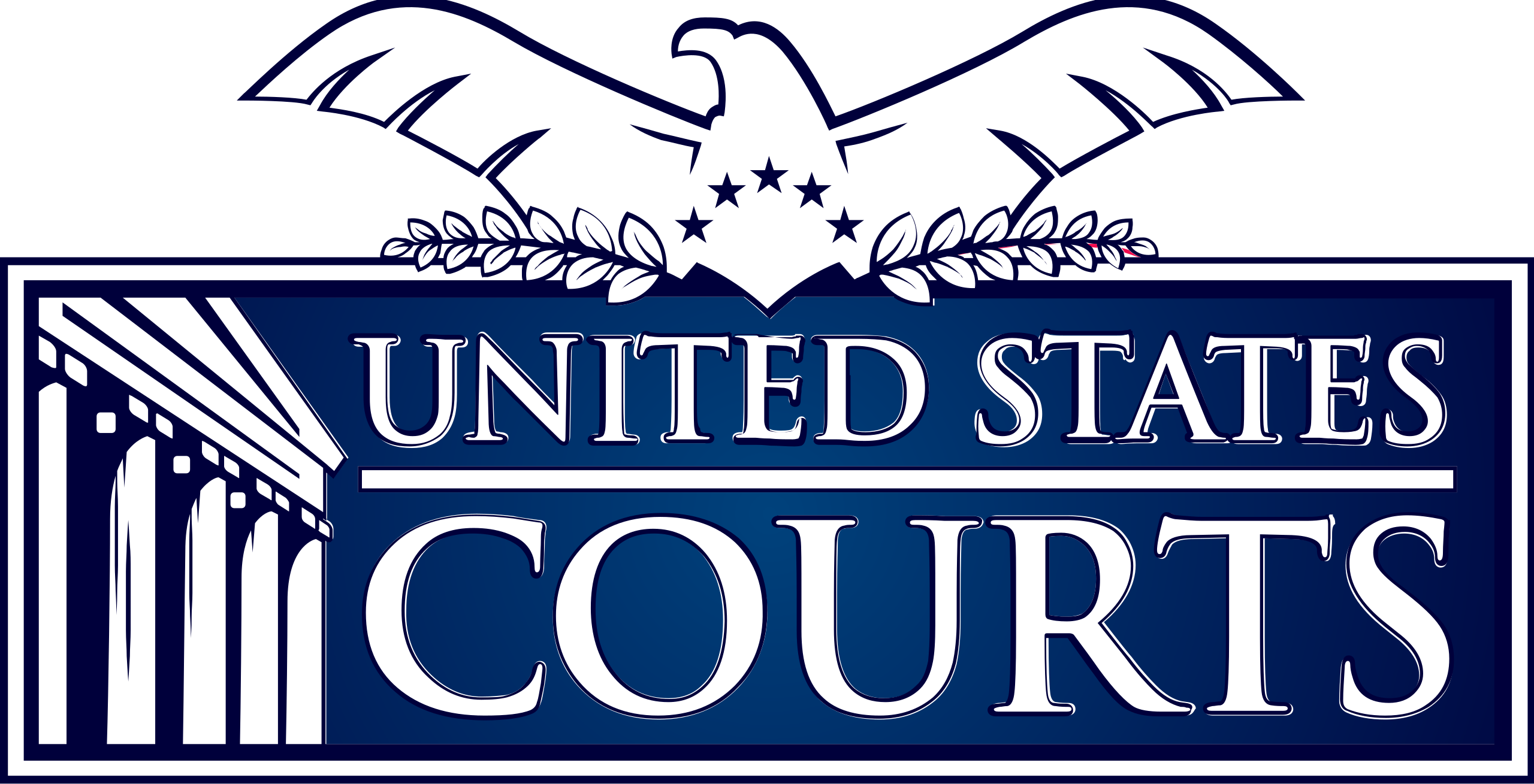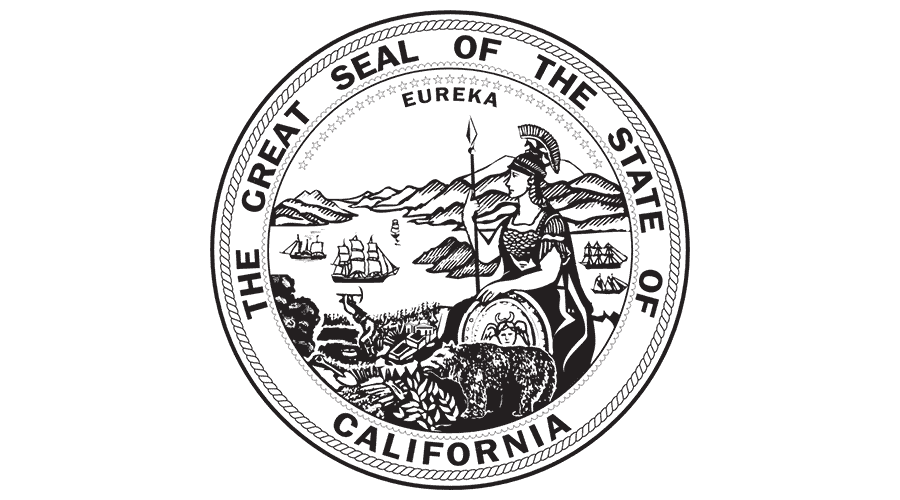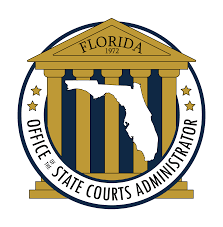






5-Star Service, Trusted & Loved by Hundreds
Your Appraiser Search Ends Here
Your Appraiser Search Ends Here
.avif)

Nationwide Coverage – Appraisals Anywhere in the US

Get it done Onsite or Online

Any Asset, Covered

Defensible for Any Purpose
At its core, probate validates the deceased's final will or determines asset distribution according to state law when no will exists. The process involves several essential steps, beginning with appointing an executor or personal representative responsible for managing the entire estate administration.
During probate, a comprehensive inventory of the deceased's assets is compiled, including real estate, financial accounts, investments, and personal property. Each asset is carefully documented and valued, which helps establish the total estate worth and determines potential tax liabilities.
Before beneficiaries receive their inheritance, the estate must resolve outstanding financial obligations. This includes paying remaining debts, settling tax responsibilities, and addressing any creditor claims. The court provides oversight to ensure all financial matters are handled equitably and legally.
The probate process offers significant legal protections for all parties involved. It establishes a transparent framework for asset distribution, helps prevent potential disputes among heirs, and ensures that the deceased's final wishes are respected and implemented according to legal standards.
While probate can seem complex, it ultimately provides a structured approach to managing an individual's final financial affairs, offering clarity and legal guidance during a challenging emotional period.
At its core, a probate appraisal establishes the precise fair market value of estate assets, reflecting their current worth under existing market conditions. This detailed assessment serves as a foundational document that prevents potential disputes among beneficiaries and provides a clear financial picture of the inherited property.
Tax considerations represent another crucial aspect of probate appraisals. Accurate valuations help executors determine potential estate tax liabilities, preventing potential financial penalties from under or over-reporting asset values. By capturing the exact market value at the time of death, the appraisal becomes an instrumental tool in managing the estate's tax obligations efficiently.
The probate appraisal also plays a pivotal role in equitable asset distribution. By providing objective, professional valuations, executors can ensure that beneficiaries receive fair shares consistent with the deceased's wishes. This approach minimizes potential conflicts and helps maintain family relationships during a challenging period of transition.
Legal requirements further underscore the importance of probate appraisals. Most courts mandate comprehensive documentation of an estate's value, and a professional appraisal satisfies this requirement. Without proper valuation, the probate process can experience significant delays or complications that prolong the settlement of the estate.
Moreover, the appraisal serves as a strategic tool for beneficiaries' future financial planning. Understanding the precise value of inherited assets enables informed decisions about retention, sale, insurance, and potential investment strategies. This information becomes a critical resource for long-term financial management.
Ultimately, a probate appraisal transcends mere documentation. It represents a comprehensive approach to estate management, providing clarity, legal compliance, and a foundation for future financial decisions during a complex and emotionally charged process.
The process involves a detailed forensic examination of the silver piece, where expert appraisers leverage deep knowledge to uncover intricate details about the item's provenance. Specialized techniques are employed to authenticate the piece's origin, including careful analysis of hallmarks, maker's stamps, and distinctive design elements that provide critical insights into its historical context.
Condition plays a pivotal role in determining value. Professional appraisers conduct meticulous inspections, examining every surface for signs of wear, potential restoration attempts, and structural integrity. They assess subtle nuances like patina development, manufacturing techniques, and preservation quality that can dramatically influence the item's market worth.
Market research forms another crucial component of the appraisal process. Appraisers conduct extensive comparative analyses, tracking recent auction results, collector trends, and current market demands to establish a precise and current valuation. This approach ensures that the assessment reflects not just the silver's intrinsic material value, but its broader collectible significance.
The ultimate goal of an antique silver appraisal extends beyond a simple monetary figure. It provides owners with comprehensive documentation that serves multiple purposes, from insurance documentation to estate planning, offering a definitive understanding of the item's historical and financial importance.
The virtual appraisal process typically involves clients providing high-resolution images from multiple angles, along with critical details about the item's provenance, markings, condition, and historical context. Advanced video conferencing platforms like Zoom or Skype enable real-time interactions, allowing appraisers to conduct interactive examinations and answer client questions immediately.
Professional online appraisals adhere to the Uniform Standards of Professional Appraisal Practice (USPAP), ensuring rigorous methodology and credible valuation regardless of assessment format. This approach eliminates geographical constraints, providing flexibility for clients located anywhere and streamlining the entire valuation experience.
While online appraisals offer remarkable convenience, they are most effective when clients provide extensive, clear documentation. Precise photographs, accurate measurements, and comprehensive background information are crucial for delivering an accurate assessment of an antique silver item's condition, authenticity, and market value.
Clients should understand that some complex or rare pieces might still require in-person examination to determine a definitive valuation. However, for many antique silver items, online appraisals represent an efficient, professional, and accessible method of understanding an item's worth.
General appraisers offer broad knowledge across multiple antique categories, capable of evaluating various silver items with a comprehensive but less specialized approach. Their versatility allows them to assess diverse silver pieces, though they may lack granular insights into rare or complex items.
Specialty appraisers represent a more focused category, concentrating on specific historical periods, cultural origins, or design styles. These experts possess deep, targeted knowledge about particular silver manufacturing eras, makers, or regional craftsmanship. Their expertise enables precise authenticity assessments and nuanced market value determinations.
Certified appraisers bring professional credentials from recognized institutions, demonstrating rigorous training and adherence to established ethical standards. Their qualifications make them particularly valuable for formal documentation requirements like insurance evaluations or estate planning.
Auction house appraisers leverage extensive market experience, providing real-time insights into current silver valuation trends. Their proximity to active market dynamics allows them to offer sophisticated pricing assessments based on contemporary collector interests and market demands.
Independent appraisers operate autonomously, offering customized services with flexible engagement models. Their professional independence allows for personalized approaches tailored to unique client requirements and specialized silver item assessments.
Online appraisers represent an emerging category, utilizing digital platforms to conduct remote evaluations. Through advanced photographic documentation and detailed item descriptions, these professionals provide convenient assessment options for clients unable to engage in traditional in-person consultations.
Each appraiser type contributes unique perspectives to silver valuation, enabling owners to find precisely matched expertise for their specific needs.
Insurance protection represents a critical motivation for professional assessment. A detailed appraisal ensures accurate coverage, preventing potential financial gaps in the event of loss, damage, or theft. Insurance providers rely on professional documentation to establish appropriate compensation levels.
Estate planning demands precise valuation of inherited silver pieces. A professional appraisal provides clear, objective documentation that can streamline inheritance processes, minimize potential family disputes, and establish a transparent framework for asset distribution.
Tax considerations make appraisals particularly valuable for those considering charitable donations. When donating antique silver items exceeding $5,000, a qualified professional appraisal becomes essential for substantiating value and maximizing potential tax deductions.
For collectors and sellers, an appraisal delivers a realistic market assessment. This knowledge empowers informed decision-making, whether preparing to sell at auction, negotiate with potential buyers, or understand the current market positioning of a specific piece.
Beyond monetary considerations, an appraisal unveils the historical narrative embedded within each silver item. Professional assessment reveals intricate details about craftsmanship, origin, and cultural significance, transforming an object from a mere possession to a meaningful artifact with its own unique story.
Understanding the multifaceted value of antique silver through professional appraisal enables owners to make informed, strategic decisions about preservation, insurance, potential sale, and long-term asset management.
Antique appraisals are quoted on a project-by-project basis. These appraisals can be completed with in-person and online methods; in-person appraisals will sometimes include travel fees, when applicable. For some projects, when necessary, the price can be determined ahead of time, in line with the specifications of the work.
What Makes Antique Silver Valuable?
Understanding the Value of Antique Silver
Evaluating antique silver requires a nuanced approach that considers multiple critical factors. These elements collectively determine the piece's worth, making the appraisal process both an art and a science.
Key Factors Influencing Antique Silver Value
- Craftsmanship and Maker's Mark
The quality of craftsmanship is paramount in determining value. Pieces created by renowned silversmiths typically command higher prices due to their:
- Historical significance
- Exceptional manufacturing techniques
- Reputation of the craftsman
- Age and Historical Context
Antique silver is traditionally defined as pieces over 100 years old. Value increases when an item:
- Connects to significant historical periods
- Represents unique cultural moments
- Demonstrates exceptional preservation
- Condition and Preservation
The physical state of antique silver dramatically impacts its market value:
- Minimal wear enhances desirability
- Original characteristics are crucial
- Extensive restoration can potentially decrease value
- Rarity and Market Demand
Valuation is significantly influenced by:
- Limited production runs
- Unique design elements
- Current collector market trends
- Silver Content and Metallurgical Composition
Intrinsic value is determined by:
- Sterling silver standard (92.5% pure silver)
- Total weight of the piece
- Purity of silver content
Comprehensive Appraisal Approach
A thorough evaluation considers these factors holistically, ensuring accurate valuation for legal, financial, and collector purposes. Professional assessment becomes critical, especially in complex scenarios like probate, where precise valuation is essential.
Why Do I Need a Professional Appraisal for Probate?
Understanding the Importance of Professional Antique Silver Appraisals in Probate
Navigating the probate process requires precise documentation and accurate asset valuation. Professional appraisals for antique silver play a critical role in ensuring a smooth, legally compliant estate settlement.
Key Reasons for Professional Appraisal
- Accurate Asset Valuation
Antique silver values are complex and depend on multiple factors, including:
- Age of the piece
- Overall condition
- Maker's reputation
- Current market demand
- Rarity and historical significance
- Legal Documentation
Probate courts require comprehensive, professional documentation to:
- Verify estate asset values
- Facilitate fair asset distribution
- Resolve potential beneficiary disputes
- Provide an unbiased, certified evaluation
- Tax Compliance
Professional appraisals ensure precise tax reporting by:
- Providing IRS-acceptable valuation reports
- Preventing potential tax complications
- Documenting asset values with professional credibility
- Minimizing risk of legal challenges
Benefits of Professional Expertise
Engaging a qualified appraiser offers significant advantages during the probate process:
- Reduces emotional and administrative stress
- Provides expert, objective assessment
- Saves time through professional research
- Ensures comprehensive asset documentation
A professional appraisal is more than a mere valuation—it's a crucial step in protecting the estate's interests and facilitating a fair, transparent probate process.
Key Factors Driving Antique Silver's Worth
Key Factors Influencing Antique Silver's Value
Determining the worth of antique silver for probate purposes involves carefully evaluating several critical elements that collectively shape its market value. Understanding these factors is essential for accurate appraisal and informed decision-making.
1. Age and Historical Significance
- Pieces manufactured before 1900 typically command higher values
- Historical connections increase desirability and potential worth
- Items linked to significant events or notable figures carry premium value
2. Maker and Brand Reputation
- Silversmith's reputation dramatically impacts valuation
- Renowned manufacturers like Tiffany & Co. and Georg Jensen represent quality craftsmanship
- Authentic maker marks provide critical provenance verification
3. Physical Condition
- Well-preserved pieces maintain higher market value
- Absence of damage, repairs, or extensive tarnishing increases appraisal worth
- Restoration needs can significantly decrease potential selling price
4. Rarity and Market Demand
- Limited production runs enhance collectible value
- Unique designs attract specialized collector interest
- Current market trends influence overall pricing
5. Ownership History (Provenance)
- Documented ownership history increases buyer confidence
- Comprehensive provenance establishes authenticity
- Compelling ownership narratives can elevate collector interest
Carefully considering these factors ensures a comprehensive and accurate assessment of antique silver's value during probate evaluation.
Identifying Valuable Antique Silver Pieces
Understanding Antique Silver Valuation
Identifying valuable antique silver pieces requires a nuanced approach that combines expert knowledge, careful observation, and comprehensive evaluation. These exquisite items represent more than mere decorative objects – they are historical artifacts with significant monetary and cultural importance.
Key Factors in Antique Silver Appraisal
- Hallmarks and Maker's Marks
- Essential identifiers stamped on the underside of silver pieces
- Reveal critical information about origin, age, and manufacturer
- Provide insight into the piece's authenticity and potential value
- Silver Content Verification
- Sterling silver (92.5% pure silver) typically commands higher values
- Professional testing methods can confirm metal composition
- Purity directly impacts overall appraisal value
- Design and Stylistic Elements
- Period-specific styles carry significant weight in valuation
- Notable design periods include Georgian, Victorian, and Art Nouveau
- Unique or intricate designs can dramatically increase desirability
- Condition Assessment
- Physical condition critically influences market value
- Signs of damage or inappropriate restoration can reduce worth
- Well-preserved pieces maintain or increase their monetary value
- Historical Provenance
- Documented ownership history adds significant value
- Connections to notable individuals or historical events increase appeal
- Comprehensive documentation strengthens appraisal credibility
Market Considerations
Understanding current market trends is crucial for accurate valuation. Collector interests evolve, and what represents a valuable piece today may change in the future. Regular engagement with auction houses, collector networks, and market research provides essential insights into the dynamic world of antique silver valuation.
A comprehensive approach to evaluating antique silver ensures informed decision-making, particularly during estate planning and probate processes. Each piece tells a unique story, combining artistic craftsmanship with historical significance.
Navigating the Professional Appraisal Process
When faced with the task of appraising antique silver for probate purposes, understanding the professional appraisal process is essential for accurate valuation and estate settlement.
Selecting a Qualified Appraiser
The foundation of a successful antique silver appraisal lies in choosing the right professional. Key considerations include:
- Certification from respected professional organizations
- Specialized expertise in antique silver
- Proven track record of comprehensive evaluations
- Deep understanding of historical and market contexts
Key Steps in the Professional Appraisal Process
1. Initial Consultation
The first stage involves a comprehensive information-gathering session where the appraiser:
- Discusses the silver's complete provenance
- Examines the current condition of the pieces
- Reviews any existing historical documentation
- Understands the specific context of the probate requirements
2. Detailed Visual Inspection and Research
A meticulous examination encompasses multiple critical components:
- Identifying maker's marks and hallmarks
- Assessing craftsmanship and historical significance
- Researching comparable market sales
- Consulting specialized databases and auction records
3. Comprehensive Appraisal Report Generation
The final stage involves creating a legally and professionally robust document that includes:
- High-quality photographic documentation
- Detailed item descriptions
- Precise market value estimations
- Supporting research and comparative analysis
A professional appraisal ensures accurate valuation, legal compliance, and respectful recognition of the antique silver's intrinsic and historical value during the probate process.
Selecting an Expert Antique Silver Appraiser
Key Considerations for Selecting an Antique Silver Appraiser
Choosing the right expert for antique silver appraisal is critical, especially during probate proceedings. The value of silver is complex, influenced by multiple nuanced factors that require specialized expertise.
Essential Qualifications to Evaluate
- Professional Credentials: Prioritize appraisers certified by recognized professional organizations such as:
- American Society of Appraisers (ASA)
- International Society of Appraisers (ISA)
- Specialized Knowledge: Seek professionals with deep expertise in:
- Different silver types (sterling, coin, plated)
- Historical silver production periods
- Specific manufacturing techniques
Critical Evaluation Criteria
- Professional Background
- Minimum 5-10 years of specialized silver appraisal experience
- Documented track record in probate-related valuations
- Positive professional references
- Comprehensive Appraisal Approach
- Detailed documentation of valuation methods
- Transparent research process
- Comparative market analysis
- Comprehensive item description
- Ethical Standards
- Commitment to professional impartiality
- Clear conflict of interest disclosures
- Adherence to industry valuation standards
Key Valuation Factors
A skilled appraiser will carefully assess multiple elements that determine silver value, including:
- Historical significance
- Craftsmanship quality
- Item condition
- Current market demand
- Provenance documentation
By meticulously selecting a qualified antique silver appraiser, you ensure an accurate, reliable valuation that supports a fair and transparent probate process.
Legal Requirements for Silver Valuation in Probate
Navigating the legal landscape of silver valuation during probate requires a comprehensive understanding of several critical components. The probate process involves validating a deceased person's will and systematically distributing their assets, with antique silver often representing a significant and valuable portion of the estate.
Key Legal Considerations for Silver Valuation
Fair Market Value Determination
- Accurate valuation is crucial for precise estate tax calculations
- Must reflect the price willing buyers and sellers would agree upon in an open market
- Requires professional appraisal by experts with specialized knowledge of antique silver
Essential Documentation Requirements
Comprehensive documentation is paramount in the probate process, typically including:
- Detailed photographic evidence of each silver item
- Precise item descriptions
- Verified individual and aggregate valuations
- Historical provenance and authenticity verification
Valuation Complexity Factors
- Consideration of historical context and craftsmanship
- Current market trends and collector interest
- Potential integration with real estate and insurance valuations
Professional Expertise Considerations
Engaging a qualified appraiser is critical to ensure:
- Accurate and legally defensible valuations
- Compliance with state and federal regulatory requirements
- Equitable asset distribution among potential heirs
- Mitigation of potential disputes during estate settlement
The intricate process of silver valuation during probate demands meticulous attention to legal standards, professional expertise, and comprehensive documentation. By prioritizing thorough and transparent appraisal practices, estate executors can effectively navigate the complex landscape of asset valuation and distribution.
Essential Documentation for Silver Appraisals
When seeking an appraisal for antique silver, particularly for probate purposes, comprehensive documentation is crucial. This approach not only establishes the provenance of the items but also provides appraisers with critical information to determine accurate value.
Key Documentation for Silver Valuation
1. Provenance Documentation
- Comprehensive ownership history records
- Original purchase receipts
- Inheritance documents
- Historical details connecting items to notable previous owners
2. Visual Evidence
- High-resolution photographs from multiple angles
- Close-up images of hallmarks, maker's marks, and engravings
- Detailed condition shots highlighting unique characteristics
3. Comprehensive Condition Assessment
- Detailed physical condition report
- Documentation of any damages
- Record of repairs or restorations
- Professional assessments of structural integrity
4. Historical Valuation Context
- Copies of previous appraisal reports
- Comparative market analysis
- Recent sale listings of similar pieces
- Auction catalog references
5. Technical Specifications
- Precise weight measurements
- Exact dimensional details
- Material composition verification
- Purity and silver content documentation
Meticulously compiled documentation streamlines the appraisal process, ensuring a comprehensive and accurate valuation that supports probate proceedings and provides a clear understanding of the silver's historical and monetary significance.
How Condition Impacts Silver's Market Value
Understanding Silver Condition's Impact on Market Value
In the world of antique silver, condition is paramount in determining market value. Collectors and professional appraisers recognize that even minor imperfections can substantially influence an item's worth. For heirs and estate representatives navigating probate, comprehending these nuanced condition factors is crucial.
Key Condition Factors Affecting Silver Value
- Surface Quality
- Scratches, dents, and tarnish directly impact aesthetic appeal
- Natural patina can be desirable, but excessive corrosion reduces value
- Clean, well-maintained surfaces command higher prices
- Structural Integrity
- Repairs significantly influence valuation
- Professional restoration maintains value better than amateur fixes
- Soldering and welding quality critically assessed by experts
- Authenticity Markers
- Maker's marks provide critical historical and origin information
- Clear, legible marks enhance potential value
- Damaged or missing marks can substantially decrease market worth
- Provenance Documentation
- Historical records substantiate an item's legitimacy
- Previous appraisals, sales receipts, and ownership history add value
- Comprehensive documentation increases collector interest
- Market Dynamics
- Collector trends and cultural significance influence valuation
- Condition interacts with broader market demand
- Current collector preferences can amplify or diminish value
Comprehensive condition assessment requires nuanced expertise. Each element – from surface quality to historical documentation – contributes to a holistic understanding of an antique silver piece's true market value during probate evaluation.
Understanding Current Antique Silver Market Trends
The antique silver market has experienced significant transformations, driven by complex dynamics including economic conditions, collector preferences, and evolving aesthetic trends. Understanding these market nuances is critical for individuals navigating probate appraisals.
Market Evolution and Collector Interest
In recent years, a notable resurgence has emerged in antique silver collecting, characterized by several key trends:
- Younger generations increasingly value vintage and heritage pieces
- Growing appreciation for historical craftsmanship and narrative-rich artifacts
- Increased demand for unique silverware with distinctive provenance
Key Valuation Factors
Several critical elements determine the market value of antique silver:
Condition Assessment
Preservation quality remains paramount in silver valuation. Pieces with minimal wear and original finishes typically command premium prices.
Provenance Significance
Silver items with documented histories or connections to notable individuals frequently experience enhanced market desirability.
Craftsmanship Evaluation
- Intricate design elements
- Rare pattern configurations
- Work by renowned silversmiths
Market Dynamics
External factors significantly influence silver valuations, including:
- Precious metal price fluctuations
- Global economic conditions
- Collector market sentiment
Strategic Considerations for Probate
For individuals managing estate assets, maintaining current market knowledge is essential. Comprehensive understanding of antique silver trends enables more informed appraisal and disposition strategies, ensuring optimal asset valuation during sensitive transition periods.
Next Steps After Your Silver Appraisal
Navigating Your Next Steps After Silver Appraisal
After completing your antique silver appraisal, several strategic steps will help you effectively manage the results and silver items for probate or estate planning purposes.
1. Comprehensive Report Review
- Carefully examine the detailed appraisal report
- Analyze item descriptions, precise valuations, and current condition
- Understand the methodologies used to determine item values
- Verify all documentation for accuracy
2. Professional Legal Consultation
- Schedule a consultation with an experienced estate attorney
- Discuss appraisal values and their implications for estate documents
- Understand potential tax consequences of silver asset transfer
- Develop a strategic approach for asset management
3. Strategic Asset Disposition
- Evaluate current market conditions for antique silver
- Explore multiple selling platforms:
- Specialized auctions
- Consignment services
- Private collector sales
- Assess potential return on investment
- Consider timing of potential sales
4. Equitable Heir Distribution
- Create a transparent asset allocation plan
- Communicate openly with potential beneficiaries
- Use appraisal values as a fair distribution guideline
- Document all distribution decisions
5. Comprehensive Documentation Management
- Organize all appraisal-related documents
- Retain copies of:
- Detailed appraisal report
- Professional invoices
- Relevant correspondence
- Store documents securely for future reference
- Consider digital and physical backup options
By following these methodical steps, you can confidently navigate the complexities of managing antique silver assets during probate, ensuring a smooth and professional process.
Common Questions About Silver Probate Appraisals
Understanding Antique Silver Appraisals for Probate
When navigating the complexities of antique silver appraisals for probate, individuals often encounter numerous questions. Understanding this process can help create a smoother transition during challenging times.
What Defines Antique Silver?
Antique silver typically refers to items that are over 100 years old, including:
- Cutlery sets
- Decorative trays
- Candlesticks
- Ornamental pieces
Why Are Silver Appraisals Critical in Probate?
Probate silver appraisals serve several crucial purposes:
- Establish accurate estate asset values
- Ensure equitable distribution among heirs
- Determine potential tax liabilities
- Resolve any outstanding estate debts
Key Factors Impacting Silver Valuation
Multiple elements influence the appraisal value of antique silver:
- Condition: Pristine items command higher values
- Maker's Marks: Renowned silversmiths significantly impact pricing
- Rarity: Unique or limited-edition pieces increase in value
- Provenance: Documented history can enhance worth
Professional Appraisal Expertise
Specialized antique silver appraisers bring critical skills to the process, including:
- Deep knowledge of historical silver craftsmanship
- Understanding of current market trends
- Ability to authenticate and accurately value items
- Compliance with legal and financial documentation requirements
Recommended Appraisal Frequency
Experts recommend appraising antique silver:
- Every 3-5 years
- During significant market fluctuations
- When new items are added to the estate
- Immediately prior to probate proceedings
By understanding these critical aspects of silver appraisals, individuals can approach probate proceedings with confidence and clarity.
BEST-IN-CLASS APPRAISERS, CREDENTIALED BY:














